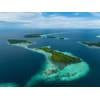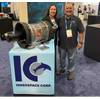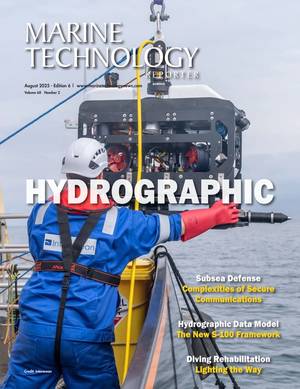Researchers Link Antarctic Ice Loss to Subsurface “Storms”
Researchers at the University of California, Irvine and NASA’s Jet Propulsion Laboratory have identified stormlike circulation patterns beneath Antarctic ice shelves that are causing aggressive melting, with major implications for global sea level rise projections.
In a paper published recently in Nature Geoscience, the scientists say their study is the first to examine ocean-induced ice shelf melting events from a weather timescale of just days versus seasonal or annual timeframes. This enabled them to match “ocean storm” activity with intense ice melt at Thwaites Glacier and Pine Island Glacier in the climate change-threatened Amundsen Sea Embayment in West Antarctica.
The research team relied on climate simulation modeling and moored observation tools to gain 200-meter-resolution pictures of submesoscale ocean features between 1 and 10 kilometers across, tiny in the context of the vast ocean and huge slabs of floating ice in Antarctica.
“In the same way hurricanes and other large storms threaten vulnerable coastal regions around the world, submesoscale features in the open ocean propagate toward ice shelves to cause substantial damage,” said lead author Mattia Poinelli, a UC Irvine postdoctoral scholar in Earth system science and NASA JPL research affiliate. “Submesoscales cause warm water to intrude into cavities beneath the ice, melting them from below. The processes are ubiquitous year-round in the Amundsen Sea Embayment and represent a key contributor to submarine melting.”
Poinelli said that he and his colleagues identified a positive feedback loop between submesoscale motion and ocean-induced melting: More ice shelf melting generates more ocean turbulence, which in turn causes more ice shelf melting.
“Submesoscale activity within the ice cavity serves both as a cause and a consequence of submarine melting,” he explained. “The melting creates unstable meltwater fronts that intensify these stormlike ocean features, which then drive even more melting through upward vertical heat fluxes.”
The study found that these ephemeral, high-frequency processes account for nearly a fifth of the total submarine melt variance over an entire seasonal cycle. During extreme events, submarine melting can increase by as much as threefold within hours as these features collide with ice fronts and penetrate beneath the ice base.
The numerical findings align closely with high-resolution observational data from moorings in the vicinity and floats deployed in another sector of Antarctica, which shows distinct intermittent events of warming and increased salinity at depths with similar magnitudes and timescales as the extreme melting events described in the study.
“The region between the Crosson and Thwaites ice shelves is a submesoscale hot spot,” Poinelli noted. “The floating tongue of the Thwaites ice shelf and the shallow seafloor act as a topographic barrier that enhances submesoscale activity, making this area particularly vulnerable.”
The conclusions take on added urgency in light of changes to Earth’s climate. The West Antarctic Ice Sheet, if it were to collapse, could raise global sea level by up to 3 meters. The research suggests that in future scenarios with warmer waters, longer polynya (an expanse of open water surrounded by ice) periods and lower sea ice coverage, these energetic submesoscale fronts could become even more prevalent, with far-reaching implications for ice shelf stability and global sea level rise.
“These findings demonstrate that fine oceanic features at the submesoscale – despite being largely overlooked in the context of ice-ocean interactions – are among the primary drivers of ice loss,” Poinelli said. “This underscores the necessity to incorporate these short-term, ‘weatherlike’ processes into climate models for more comprehensive and accurate projections of sea level rise.”
Co-author Yoshihiro Nakayama, assistant professor of engineering at Dartmouth, said, “Initially, I was just trying to understand the observations using model output so we can say, ‘This is how you explain the data.’ But now that our model matches the data so well, we can go an extra step. We can extrapolate further to say there’s weatherlike storms hitting and melting the ice.”
Eric Rignot, UC Irvine professor of Earth system science, who provided advice and expertise on polar ice and ocean interactions to the early-career research team, said: “This study and its findings highlight the urgent need to fund and develop better observation tools, including advanced oceangoing robots that are capable of measuring suboceanic processes and associated dynamics.”
Lia Siegelman of Scripps Institution of Oceanography at the University of California, San Diego joined Poinelli and Nakayama on this project. Funding was provided by NASA’s Cryospheric Sciences Program with support from the NASA Advanced Supercomputing Division.

















 August 2025
August 2025



